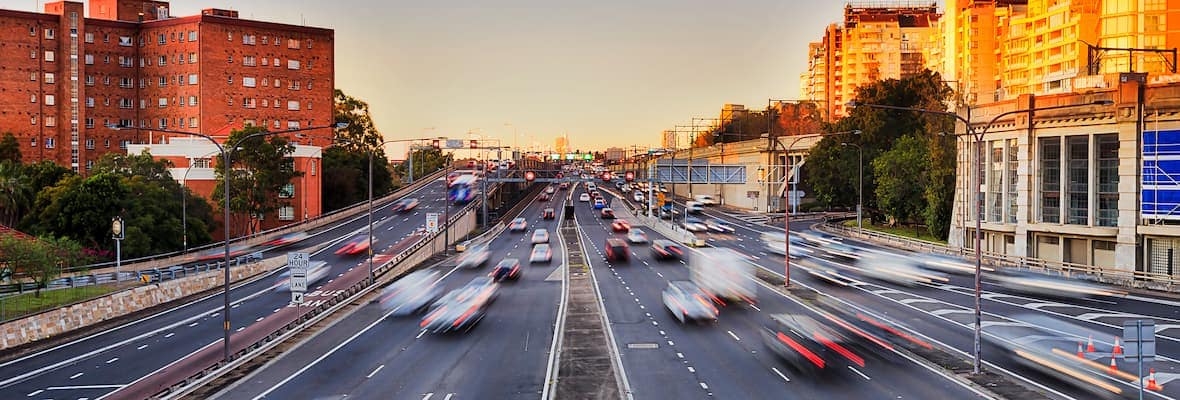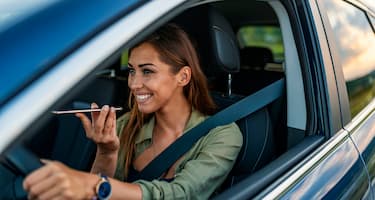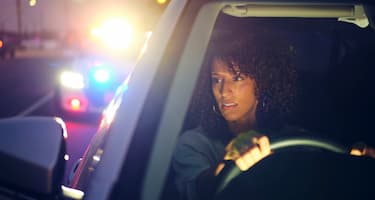While it’s considered a seriously dangerous driving behaviour, speeding is still common on Australian roads.
That’s why Budget Direct has conducted a deep dive into what everyday Aussies are doing behind the wheel and what they really think about driving over the speed limit.
Quick Stats
- Western Australian respondents were most likely to drive slightly above the speed limit and most likely to get a speeding ticket in the past 12 months.
- Compared to 2022, more respondents now say they want speed limits decreased in Australia.
- More than 90% of Australians surveyed haven’t received a speeding ticket in the past 12 months.
- Overtaking on a motorway or highway was the most common reason Australian respondents drove faster than normal.
We surveyed 1,000 drivers aged 18 and over in Australia about their behaviours, attitudes and opinions on speeding.
To better understand the culture around speeding, we also compared our findings to third-party data and to our previous Speeding Survey & Statistics 2022 report to explore any notable trends in behaviours.
Speeding Statistics
Driving too fast is considered one of the most dangerous behaviours found on the road.
Speeding happens if you’re driving over the legal speed limit or if you’re driving too fast for the conditions, for instance in wet weather.
In New South Wales, speeding contributed to around 41% of all road deaths and 24% of serious injuries each year. [1]
The faster the speed is, the less chance there is of surviving a car crash.
For instance, if a car hits a pedestrian at 30 km/h there would be a 90% chance the pedestrian would survive. However, if that car was travelling at 50 km/h, the chance of survival plummets to just 10%. [2]
Similarly, the percentage of survival in a head-on crash between two cars of similar size and mass drops from 95% if they were both driving at 60 km/h to just 20% if they were both driving at 90 km/h. [2]
Chance of Surviving a Head-on Crash
The Cost of Speeding
Speeding isn’t just dangerous – it can also be costly. Constantly driving too fast can cause wear and tear which might impact everyday costs such as repairs and even insurance. But speeding can also result in large fines.
In South Australia, driving more than 45 km/h over the speed limit could cost an offender almost $2,000 in fines and nine demerit points. [3]
Similarly in Queensland, driving more than 40 km/h over the speed limit could result in a $1,780 fine and eight demerit points. [4]
Minimum Speeding Fine by State
| State | Speed Over the Limit | Fine | Demerit Points |
|---|---|---|---|
ACT[5] |
≤ 15 km/h* |
$316 |
1 |
Qld[4] |
< 11 km/h |
$309 |
1 |
Vic[6] |
< 10 km/h |
$240 |
1 |
SA[3] |
< 10 km/h |
$196 |
2 |
NT[7] |
Up to 15 km/h |
$150 |
1 |
NSW[8] |
≤ 10 km/h |
$137 |
1 |
WA[9] |
≤ 9 km/h |
$100 |
0 |
Tas[10] |
< 10 km/h |
$98 |
2 |
*Not in a school zone
Stopping Distance
The faster you drive, the longer it takes to stop. For instance, if you’re travelling at 30 km/h, the reasonable stopping distance is around 19 m.
If you’re driving at 50 km/h, the stopping distance increases to about 37 m. However, if you drive just 10 km/h faster at 60 km/h, the stopping distance jumps to 56 m.
To put that into perspective, if a car hits a pedestrian at 50 km/h, the impact is twice as likely to cause death than if the car had been travelling just 10 km less. [2]
Stopping Distance by Speed
Speeding Survey Results
To better understand how Aussies feel about their own behaviours and the behaviours of others on the road, we surveyed 1,000 drivers on the topic of speeding.
Check out our findings below.
How fast do you normally drive (relative to the speed limit of the road you're on)?^
^Due to how the figures are rounded within the survey data, numbers may not add up to exactly 100%.
More than half of those surveyed said they usually drove to the speed limit, while almost a quarter said they drove slightly under.
Western Australian respondents were the most likely state to say they drove slightly above the speed limit.
Meanwhile, 35.9% of those surveyed aged 68 to 77 said they normally drove slightly under the speed limit. Similarly, more than 30% of those surveyed who said they drove a ute had the same response.
Have you received a speeding fine in the last 12 months?^
^Due to how the figures are rounded within the survey data, numbers may not add up to exactly 100%.
More than 90% of those surveyed said they hadn’t received a speeding fine in the past 12 months.
South Australian respondents were the least likely state to say they had a speeding fine with just 4.1% of those surveyed saying they received one in the past year. Meanwhile, Western Australians were the most likely to have had a speeding ticket, representing 12.4% of respondents.
Younger respondents were more likely to have received a speeding fine in the past 12 months with 14.6% of those aged 18 to 27 saying they had.
Meanwhile, 13.9% of those surveyed who said they owned a 4x4 said they had received a fine in the past year for speeding.
How much did your most recent speeding fine cost?^*
^Due to how the figures are rounded within the survey data, numbers may not add up to exactly 100%.
*Only respondents who answered yes to the previous question could respond to this question. South Australian respondents and those aged 58 to 77 were omitted from the results due to their negligible sample sizes.
Of those who received a speeding fine in the past 12 months, more than half said it cost them between $100 and $300. Meanwhile, 27.9% said it cost them $300 to $500.
Between the states surveyed, those in Victoria were the most likely to receive a speeding fine between $300 and $500, while those surveyed in New South Wales were the most likely to have one up to $1,000.
What do you think should happen to the speed limit on Australian highways, freeways, and motorways?^
^Due to how the figures are rounded within the survey data, numbers may not add up to exactly 100%.
The majority of those surveyed said they believed Australia’s speed limits should remain the same, while just over one in five said they should be increased.
Respondents from Western Australia and Queensland were the most likely to want to increase speed limits, while those from South Australia were the most keen to decrease them.
Men who were surveyed were more likely than women to say they wanted higher speed limits, with 27.9% of men choosing to increase them compared to just 15.1% of women.
Meanwhile, 29.2% of those surveyed who said they drove a 4x4 opted to increase the speed limits, as did 25.6% of ute drivers who were surveyed.
In the two years to 2024, an increasing number of respondents said they wanted speed limits decreased across Australia. [11]
Does your driving change when you have a passenger in the car?^
^Due to how the figures are rounded within the survey data, numbers may not add up to exactly 100%.
When driving with a passenger in the car, almost 80% of respondents said they usually drove at the same speed as normal.
Queensland respondents were the least likely to say they would drive slower than they would on their own.
Meanwhile, those surveyed between the ages of 18 and 27 were the most likely age group to say they drove slower if they had passengers in their car.
Which scenarios might cause you to drive faster than normal?^*
^Participants could select all that applied. Percentages may not add up to 100%
*Those who answered “well below the speed limit” and “well above the speed limit” were omitted from this graph due to their negligible responses.
Respondents said the most common cause of speeding was to overtake on a motorway or highway, closely followed by being unaware of their speed.
Meanwhile, more than a quarter of respondents said nothing would make them drive faster than normal.
Those surveyed who said they drove slightly above the speed limit were much more likely to say it was because the speed limit was too low, because they were late for work or an appointment or because they were overtaking.
Those surveyed in New South Wales were the most likely to say they would speed because they felt the speed limit was too low.
Women surveyed were more likely to be unaware of their speed, with 43% of women surveyed compared to 32.3% of male respondents choosing this response.
Meanwhile, those aged 18 to 27 surveyed were the most likely to speed because they were angry or needed the toilet.
How many kilometres per hour over the speed limit do you believe is acceptable to drive?^
^Due to how the figures are rounded within the survey data, numbers may not add up to exactly 100%.'
*Those who answered “well below the speed limit” and “well above the speed limit” were omitted from this graph due to their negligible responses.
The majority of Australians surveyed said they believed it was acceptable to drive less than 5 km/h over the speed limit.
However, just over a third of those surveyed said that no speeding is ever acceptable. This included more than half of those surveyed aged 68 to 77.
Those surveyed in New South Wales and Western Australia were the most likely states to say that driving from 10 km/h to 20 km/h over the speed limit was acceptable.
Just under half of those surveyed who said they usually drove slightly above the speed limit said it was acceptable to drive up to 10 km/h over the limit.
In the past 12 months, how often have you been exposed to speeding (either cars around you or as a passenger while the driver is speeding)?^
^Due to how the figures are rounded within the survey data, numbers may not add up to exactly 100%.
A third of Australians surveyed said it was very often that they were exposed to speeding on the road in the past 12 months. The same percentage said it happened just sometimes.
When broken down by state, 40% in Western Australia and 38.4% in South Australia said it was very often they were exposed to speeding.
Women surveyed were more likely than men to say they always saw speeding when driving in the past 12 months.
Meanwhile, 17% of those aged 18 to 27 and 28 to 37 also said they always saw cars speeding on the road in the past year.
Key Takeaways
More Aussies Looking to Slow Down
The percentage of Australians surveyed in 2024 who said they wanted to decrease the country’s speed limits has doubled since 2022.
Meanwhile, almost a quarter of those surveyed said they have been driving slightly under the speed limit in their day-to-day life.
Slower driving could be paying off with 92.1% of respondents saying they hadn’t received a speeding fine in the past 12 months, which was up slightly from two years prior.
Faster in the West
Western Australians were the most likely state to say they drove slightly above the speed limit, accounting for a quarter of respondents.
Meanwhile, they were also the most likely state to say they had received a speeding ticket in the past 12 months.
Similarly, across all Australian respondents, younger drivers and 4x4 owners were the two groups most likely to say they had received a speeding fine in the past year.
It comes as 40% of those surveyed in Western Australia said they would experience someone speeding on the road very often.
However, alongside Queensland respondents, those surveyed from Western Australia were the most likely to say they wanted speed limits to increase across the country.
Interestingly, Western Australia is the only state or territory in Australia that doesn’t issue demerit points for its lowest level of speeding offences. It also issues the second lowest speeding fine in the country at $100 for speeding offences equal to or less than 9 km/h over the speed limit.
Why People Speed
Almost half of the drivers surveyed said overtaking on a motorway or highway would cause them to drive faster than normal.
Women respondents were more likely to be unaware of their speed, compared to the men surveyed. Meanwhile, younger drivers were more likely to speed because they were angry or needed the toilet.
However, more than a quarter of respondents said nothing would make them drive faster than normal.






